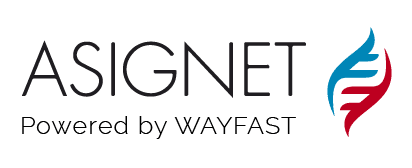Software Asset Management: Mistakes, Truths & Best Practices in SAM
Software Asset Management (SAM) can be defined as the process of managing, controlling, licensing, and optimizing your IT assets. SAM impacts not only how the software is being used, but also automation, security, digitization, control of the shadow IT, and your future software strategy. The main goal of implementing software asset management procedures are to :
- Eliminate expenditures on unused assets
- Ensure compliance
- Reduce the risk of penalties
- Improves business processes
- Avoid security breaches
- Reduce the risk of unplanned costs
- Optimize investments
Software asset management helps to ensure that all software license compliance obligations are met, removing risk from purchasing new or used software. When automated, it also improves the efficiency of business processes and provides visibility into the entire lifecycle of how your organization uses its licensed software. It’s not just about buying the right number of licenses to get started – it’s also about making sure you have enough seats in use to make the best use of your investment.
Common Software Asset Management Mistakes
In order to prevent unnecessary expenditures from happening, it is important that organizations have control over their software assets – making sure that all software is properly accounted for, the appropriate licenses are in place, and they are being used appropriately. Here are some common SAM mistakes that companies make:
- Not performing regular checks to find out which licenses need renewing or can be eliminated – In order to avoid overspending on unnecessary licensing fees.
- Not having a formal methodology. Is important to conduct regular audits of your clients’ network or desktops.
- Having the right people who can implement a design for best practice is essential.
- Not managing cloud services as part of their SAM program because they feel those licenses are not under their control.
- The organization uses a very manual process to track and manage software assets – meaning that there is no way for them to be able to rapidly assess the risk associated with new applications being introduced into the environment.
- There is no formalized process for asset management and IT teams do not understand their organization’s business processes or how software assets are used across the company
- The team does not properly track all existing licenses, resulting in a lack of understanding about which applications have active subscriptions and which ones need to be renewed.
Strategic Benefits of Software Asset Management
Software asset management, a business process, can be used to save up to 30 percent in software license costs. It helps organizations manage their software assets and licenses by identifying, controlling, and protecting them through a variety of methods.
Businesses are trying to manage their software assets in the most cost-effective way, while also maintaining compliance with regulations and minimizing risks.
Can Software Asset Management Be Automated?
Today there are many options for managing their software assets, including Software Asset Management as a Service (SAMaaS). Some of the benefits include: reducing costs by leveraging cloud services; improving compliance by discovering all licenses across organizational boundaries; enabling business process optimization through continuous discovery; and increasing user productivity by providing centralized access to all applications.
Implementing SAM practices can help you save money on expenses like licensing fees and make sure that all of your applications are updated with security patches so they remain productive.
About Asignet
Asignet is the technology and automation leader of Telecom & IT Lifecycle Expenses Management utilizing its patented RPA Robot process automation platform. The Asignet platform builds and monitors telecom, SaaS, Cloud, IT billing, inventory, and usage, helping global enterprises to optimize, secure, and manage all IT assets and its expenses.
Contact us for more information.






